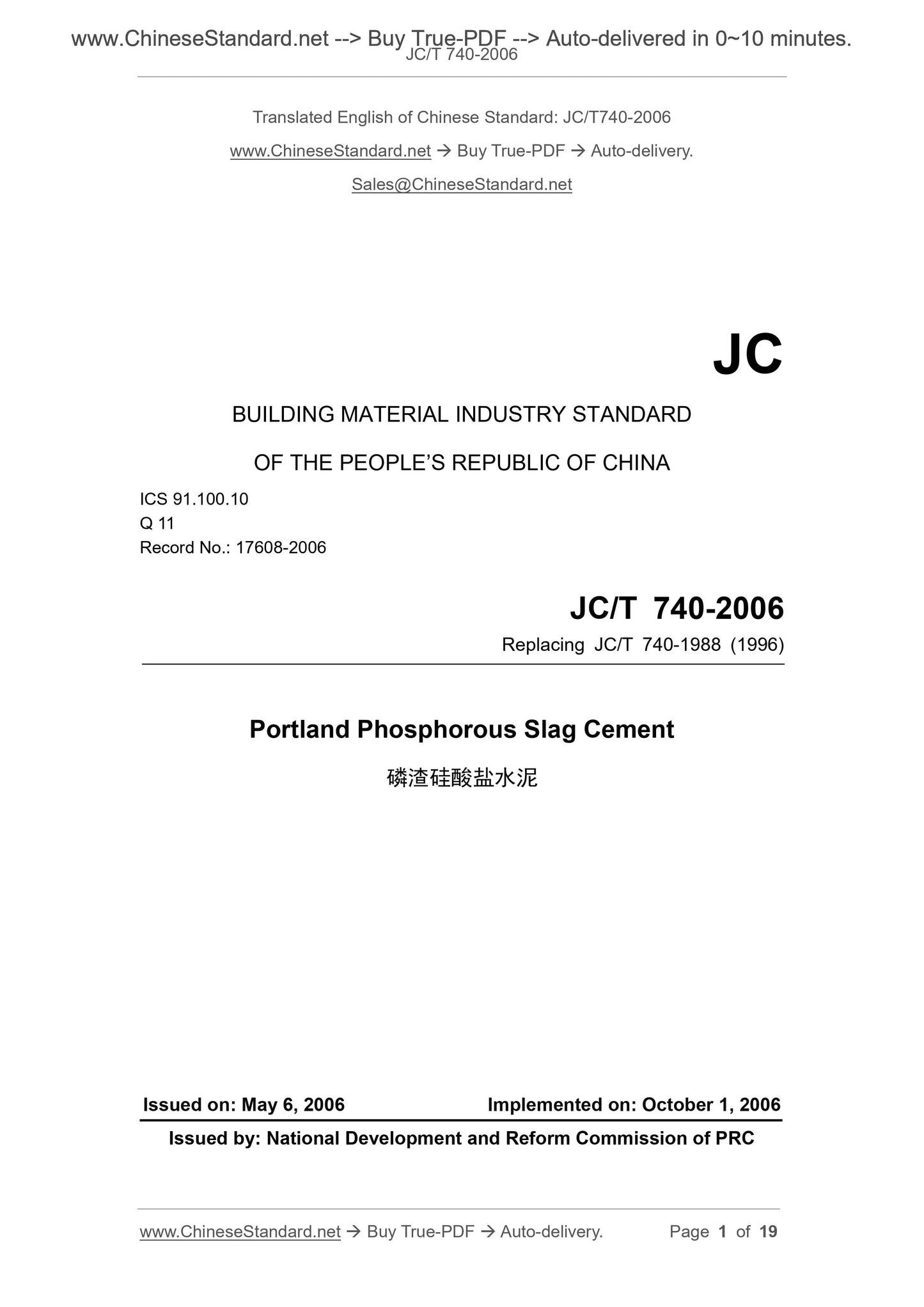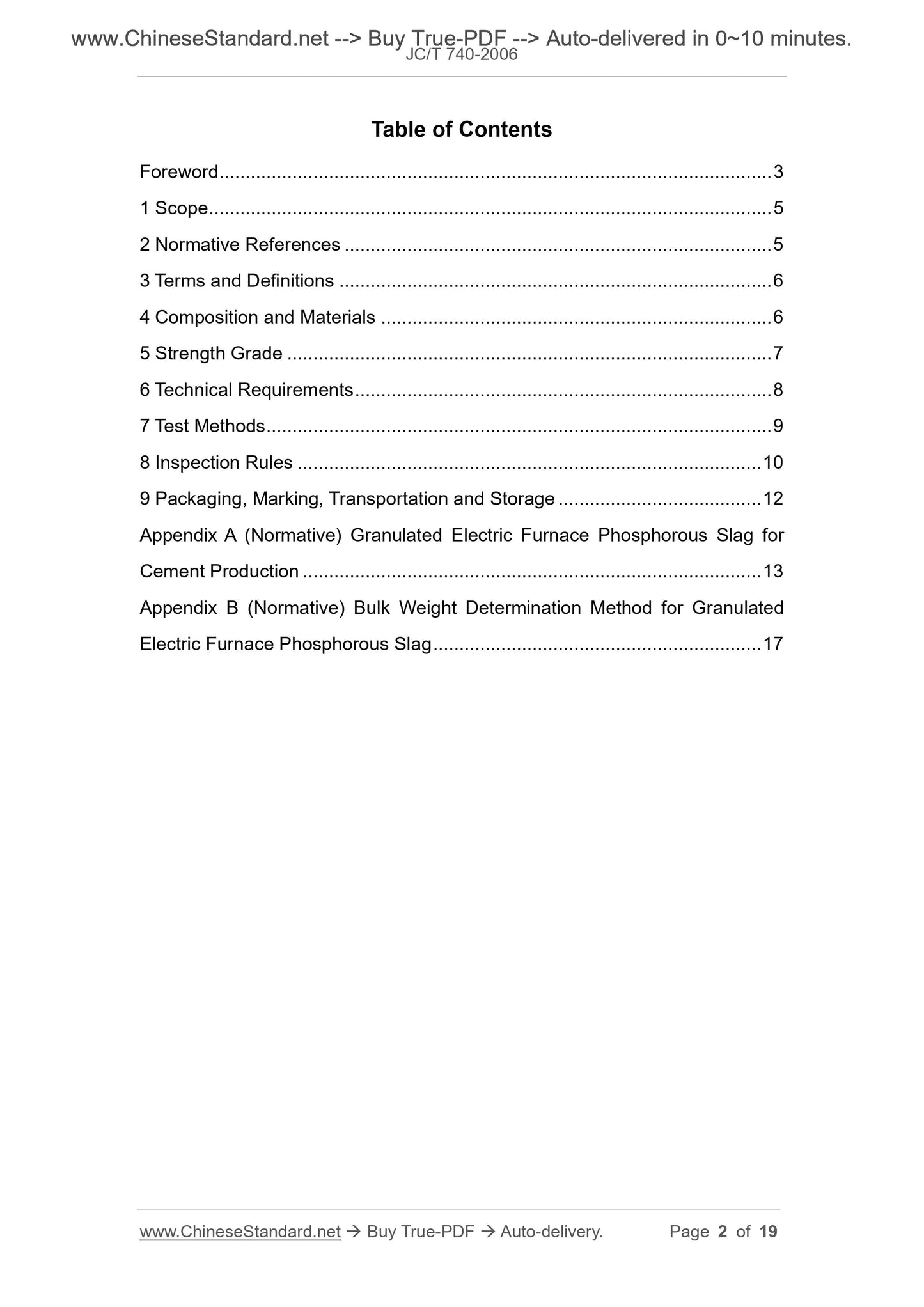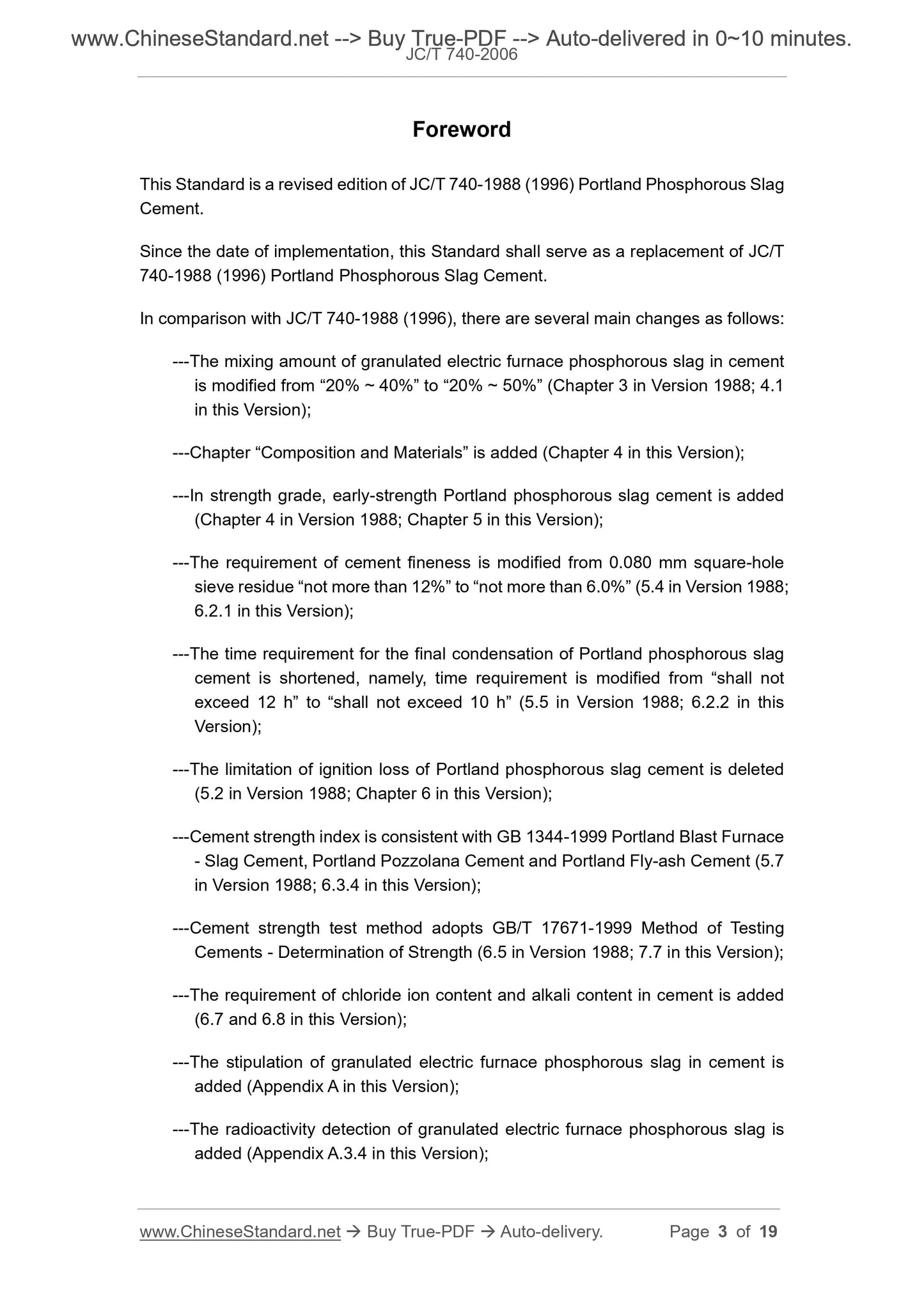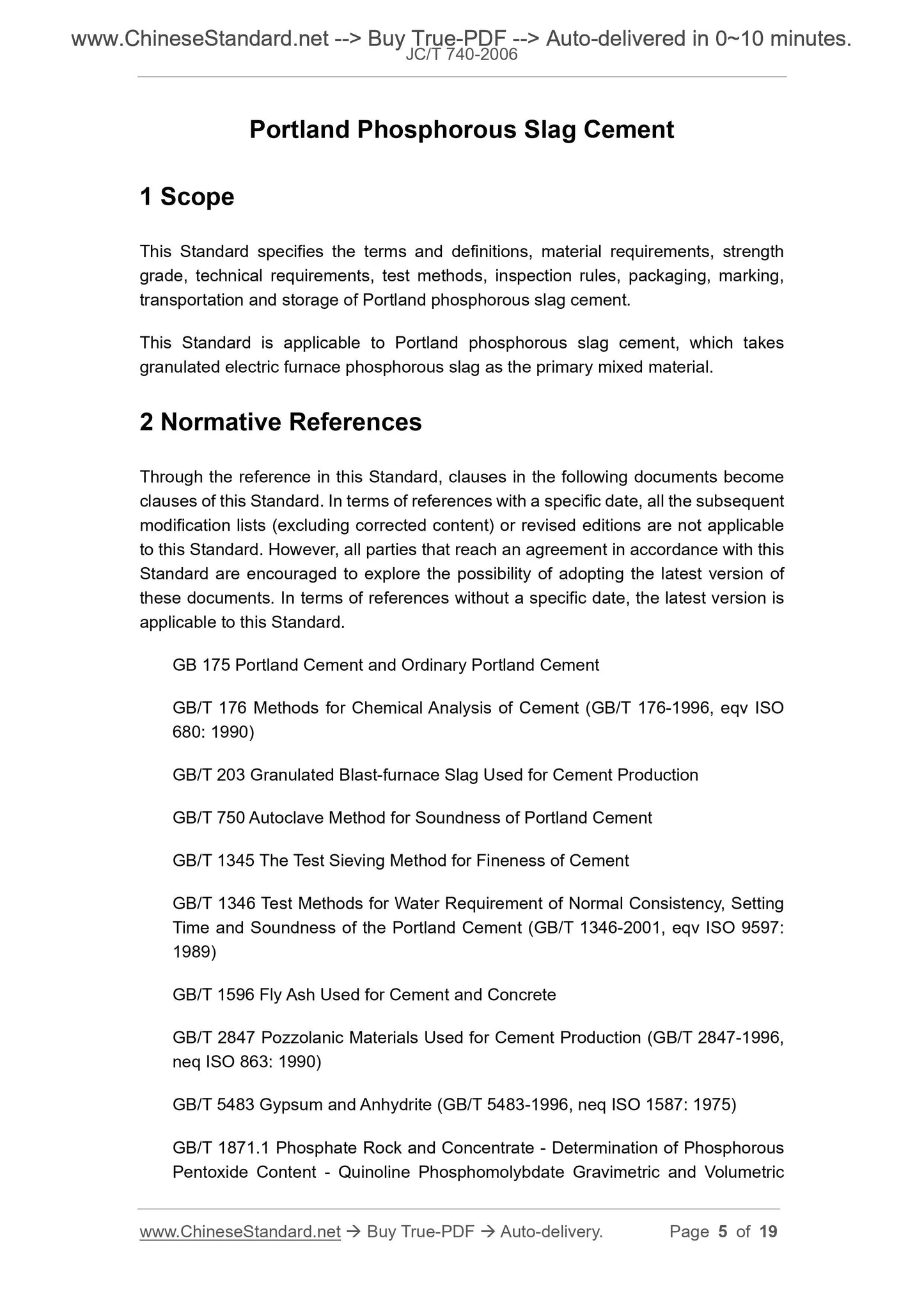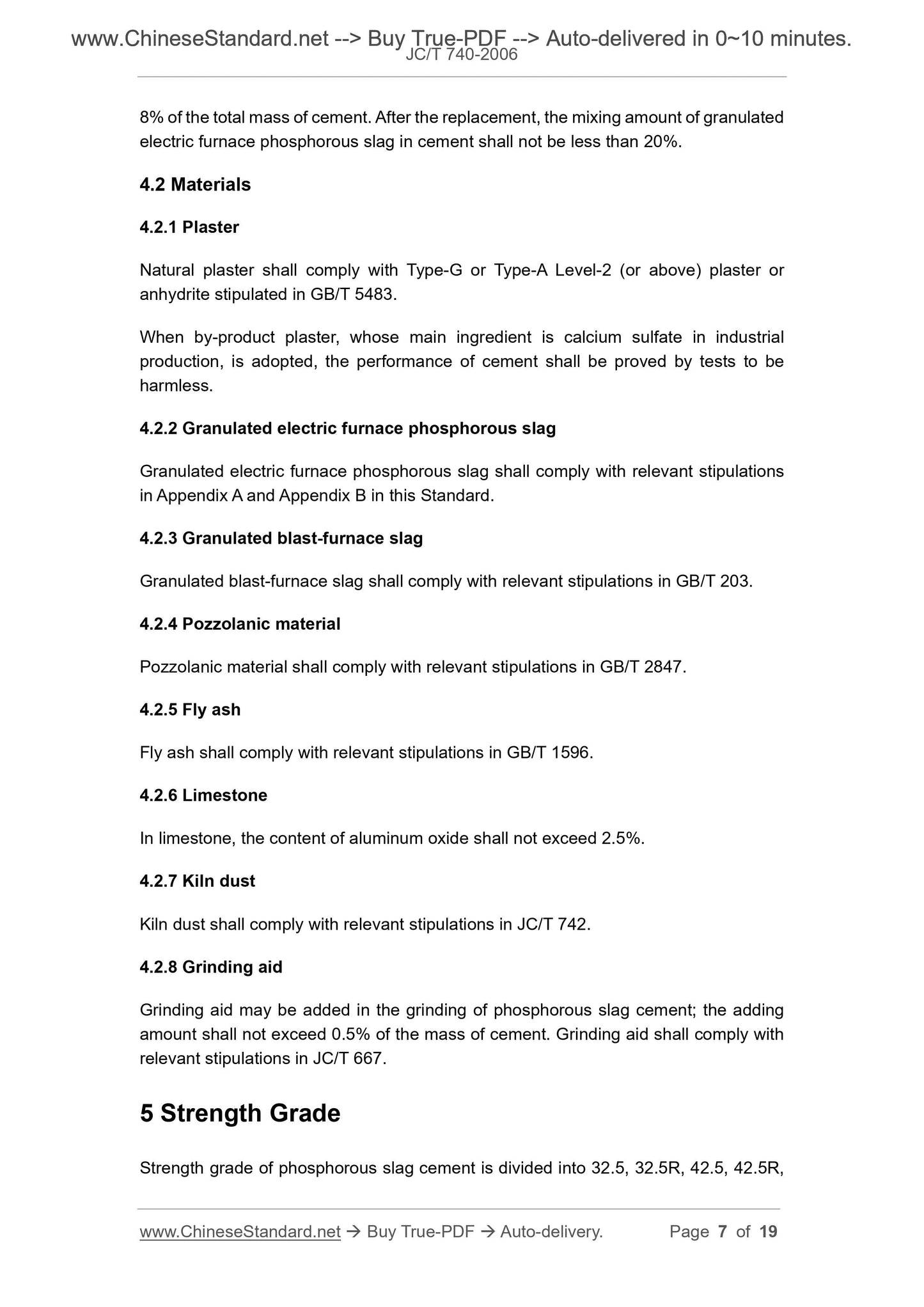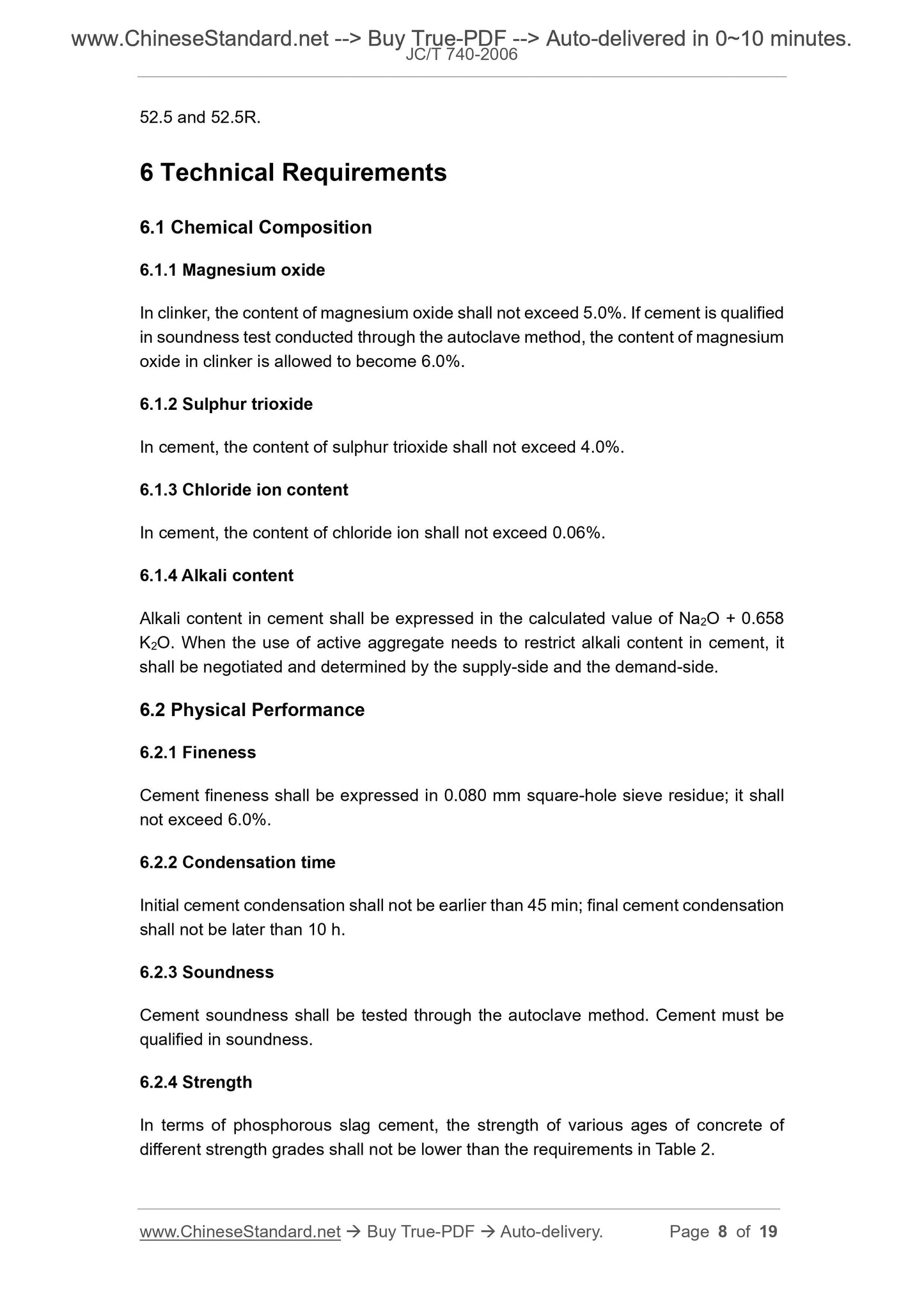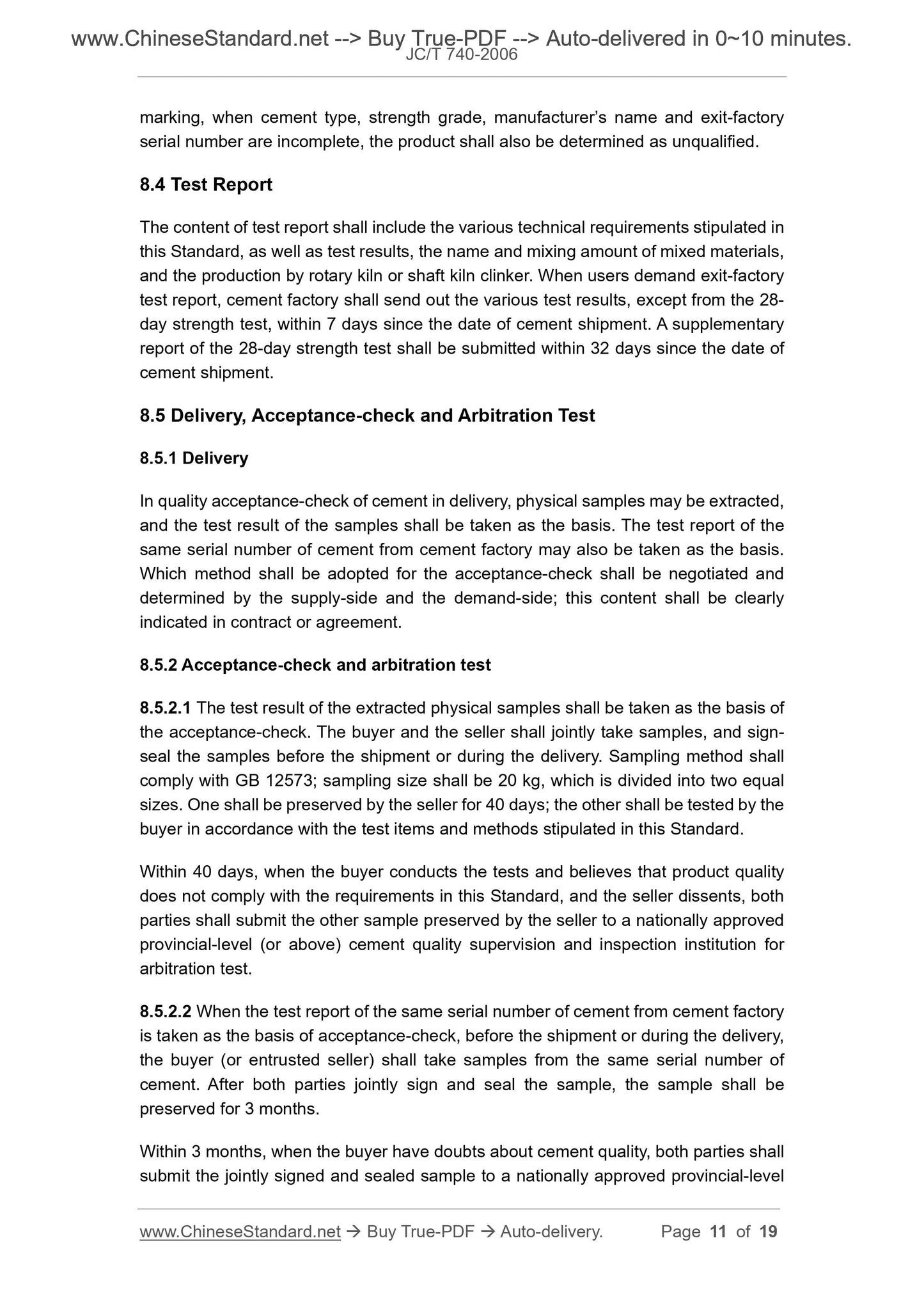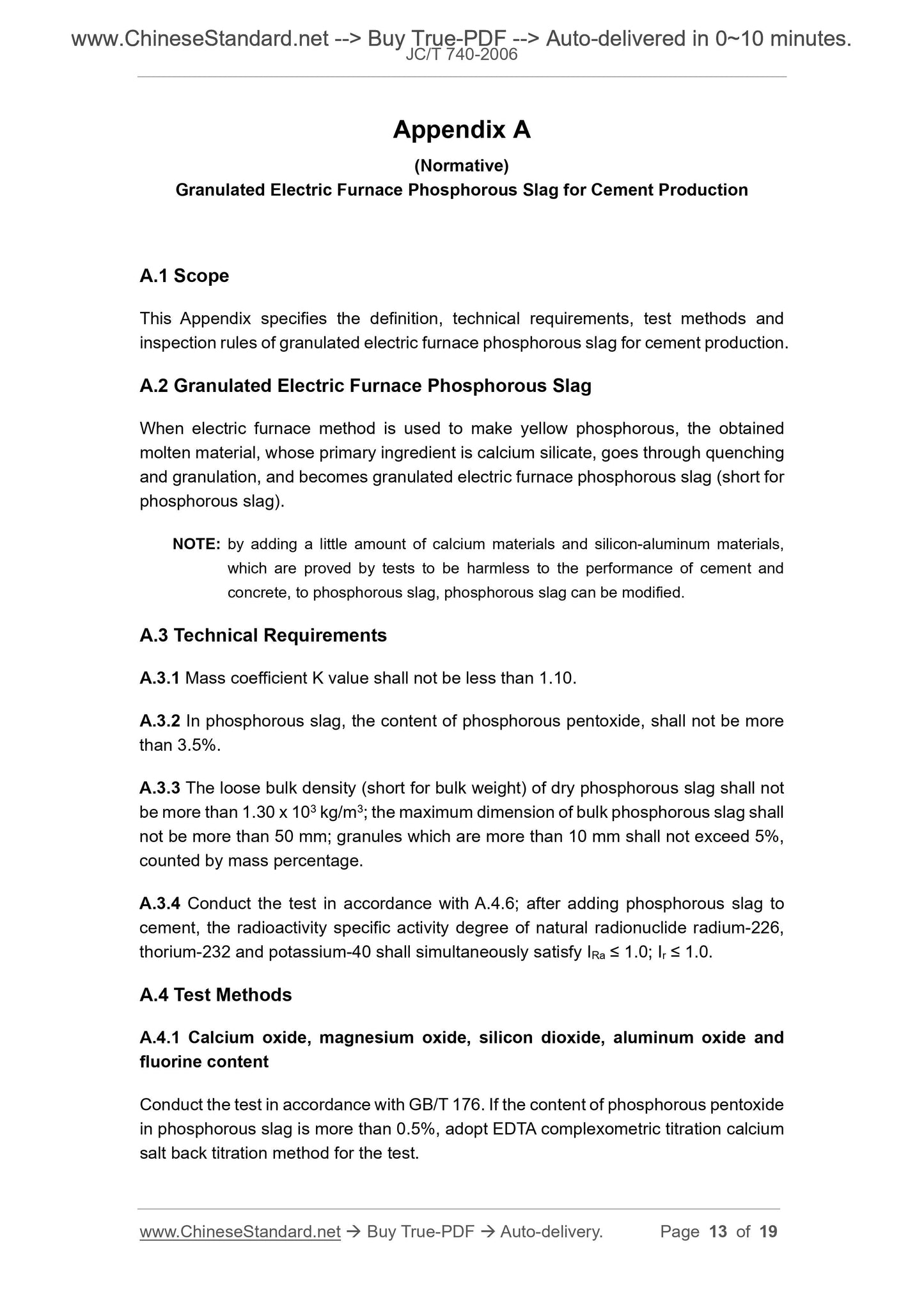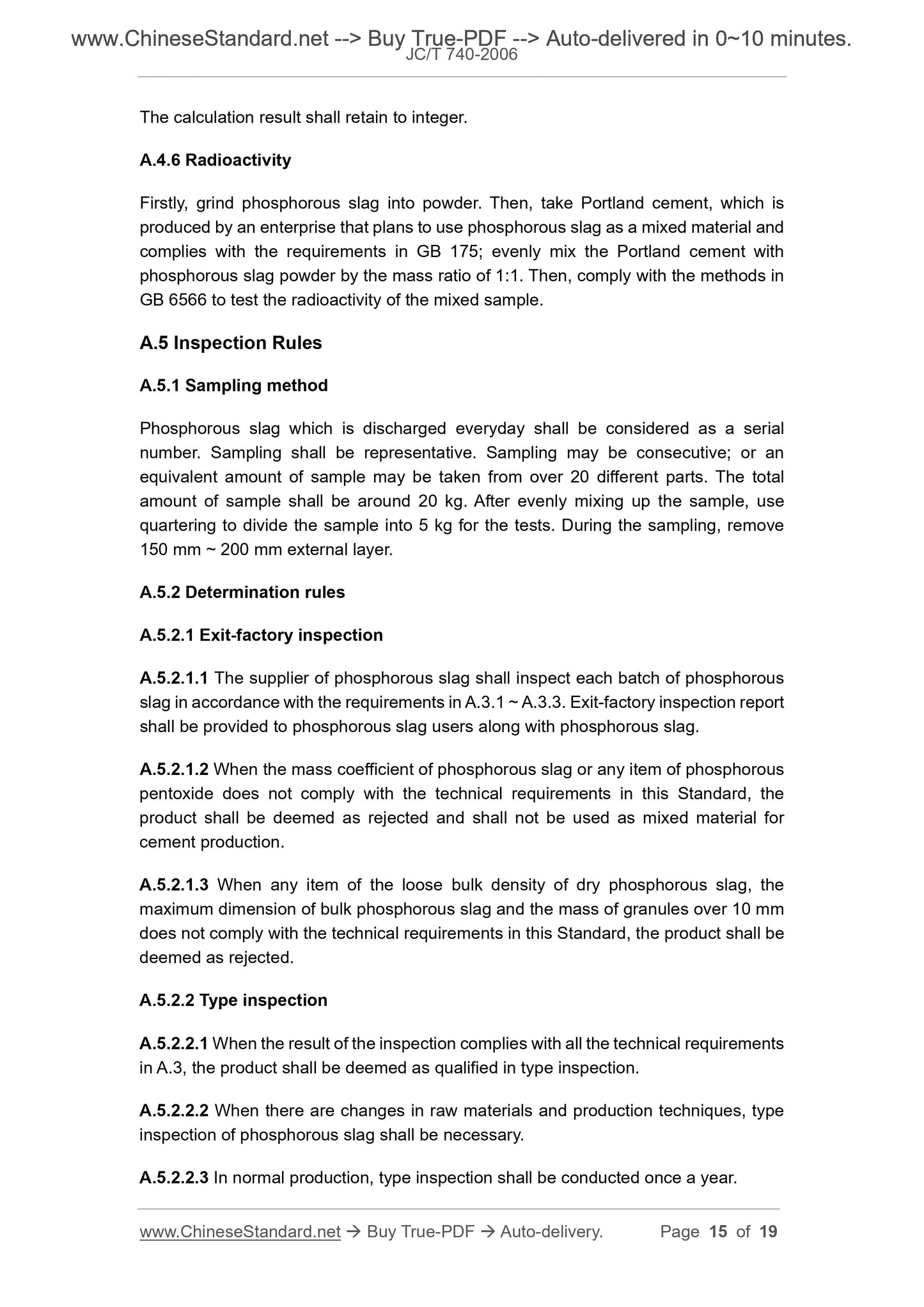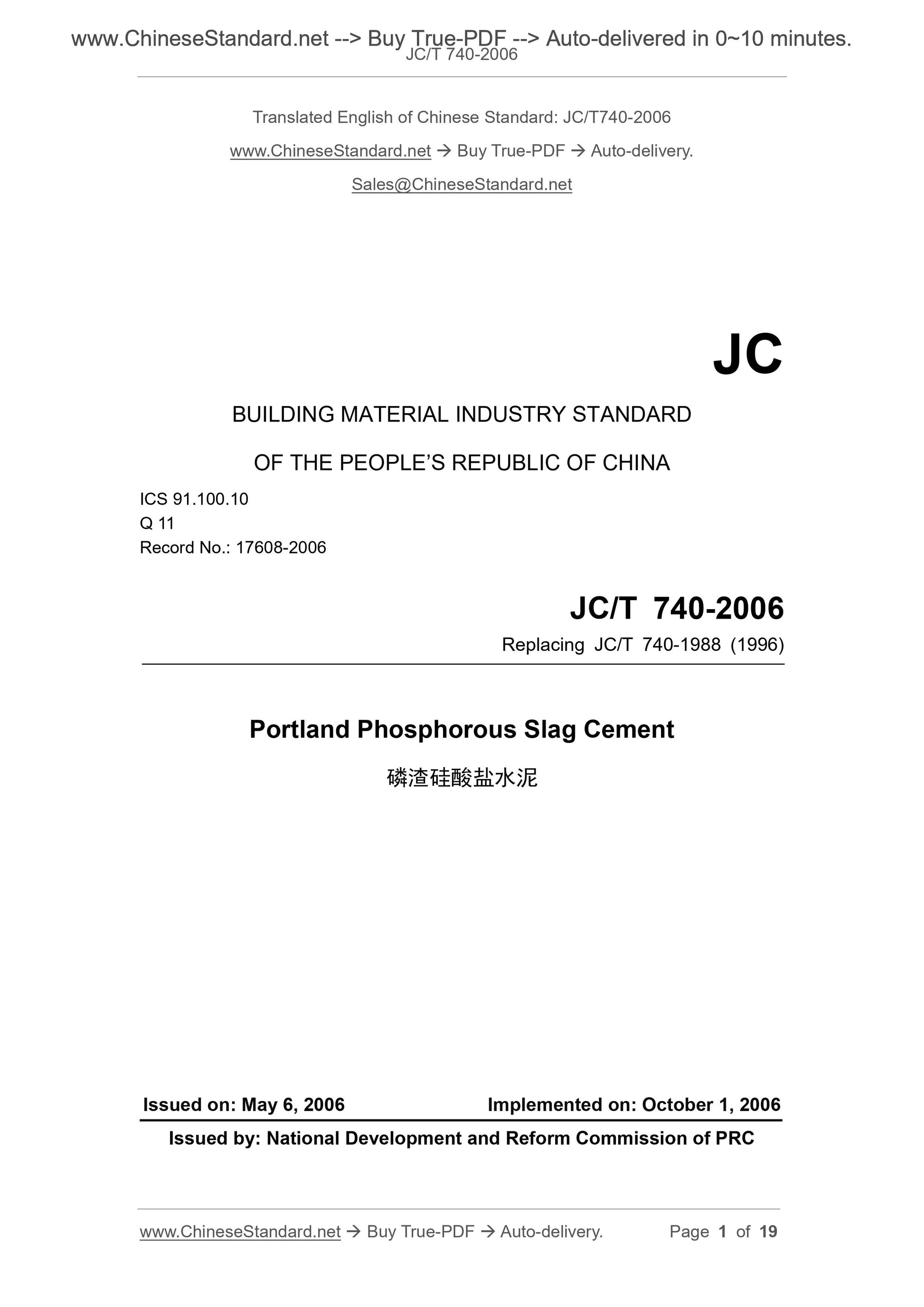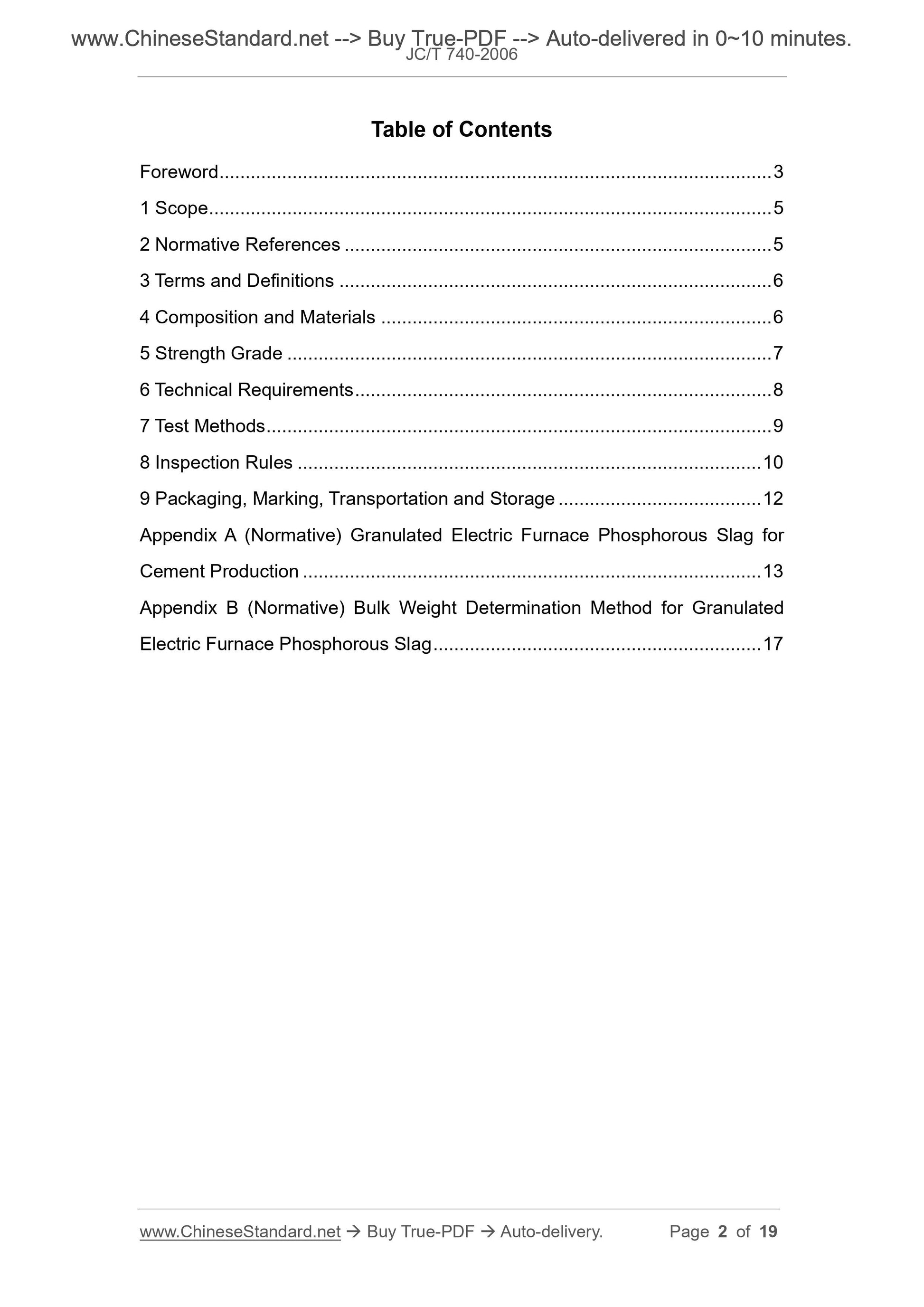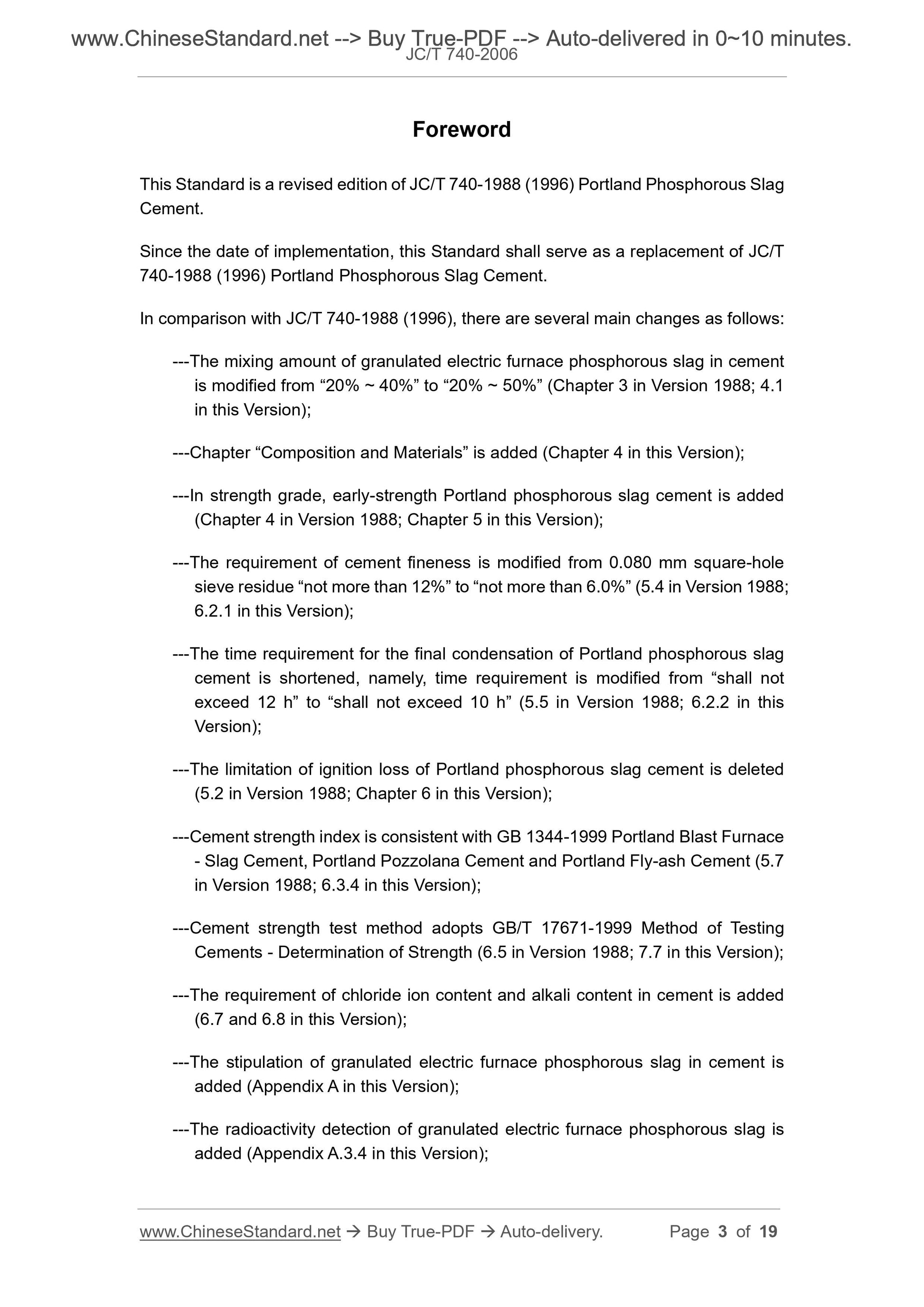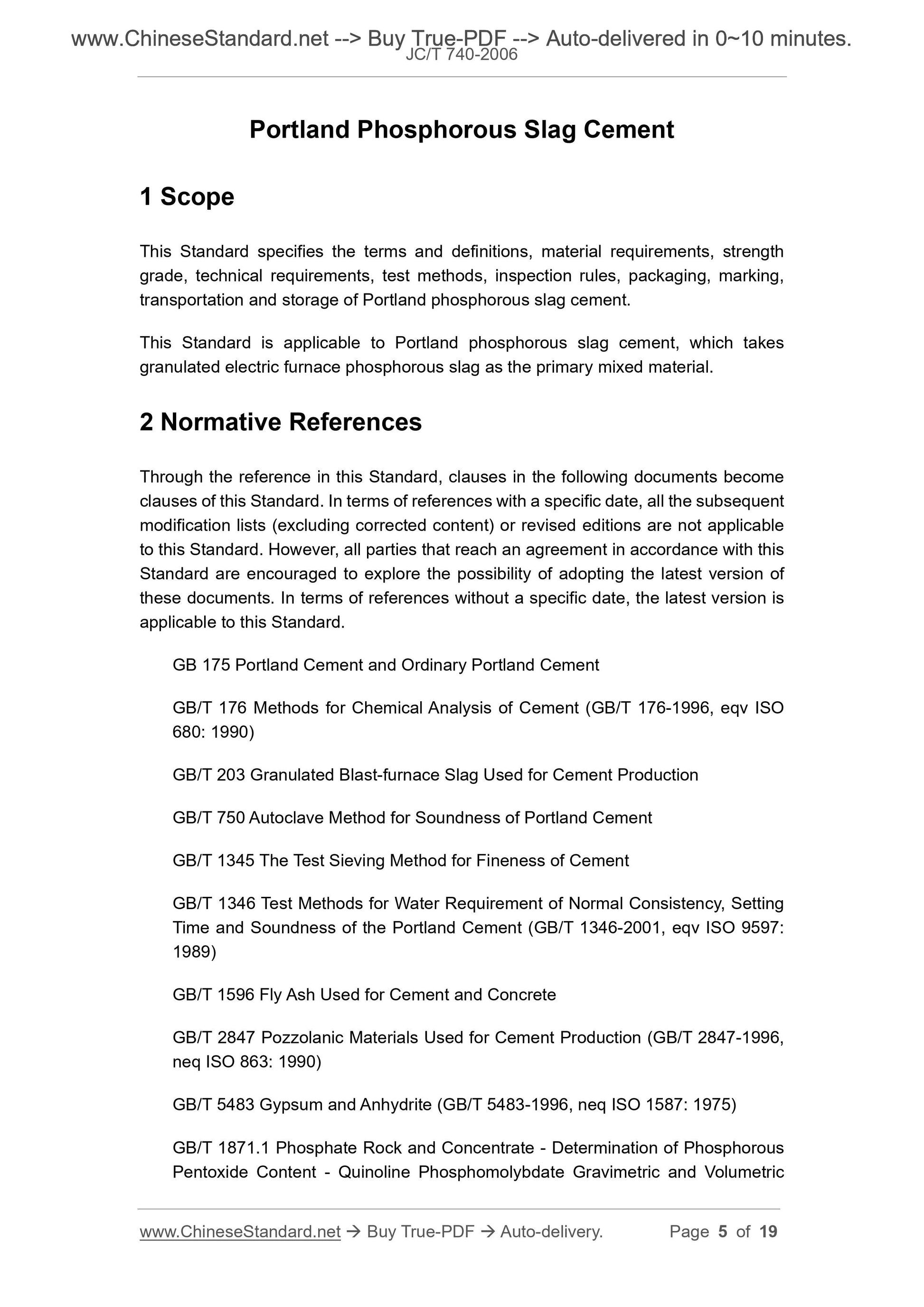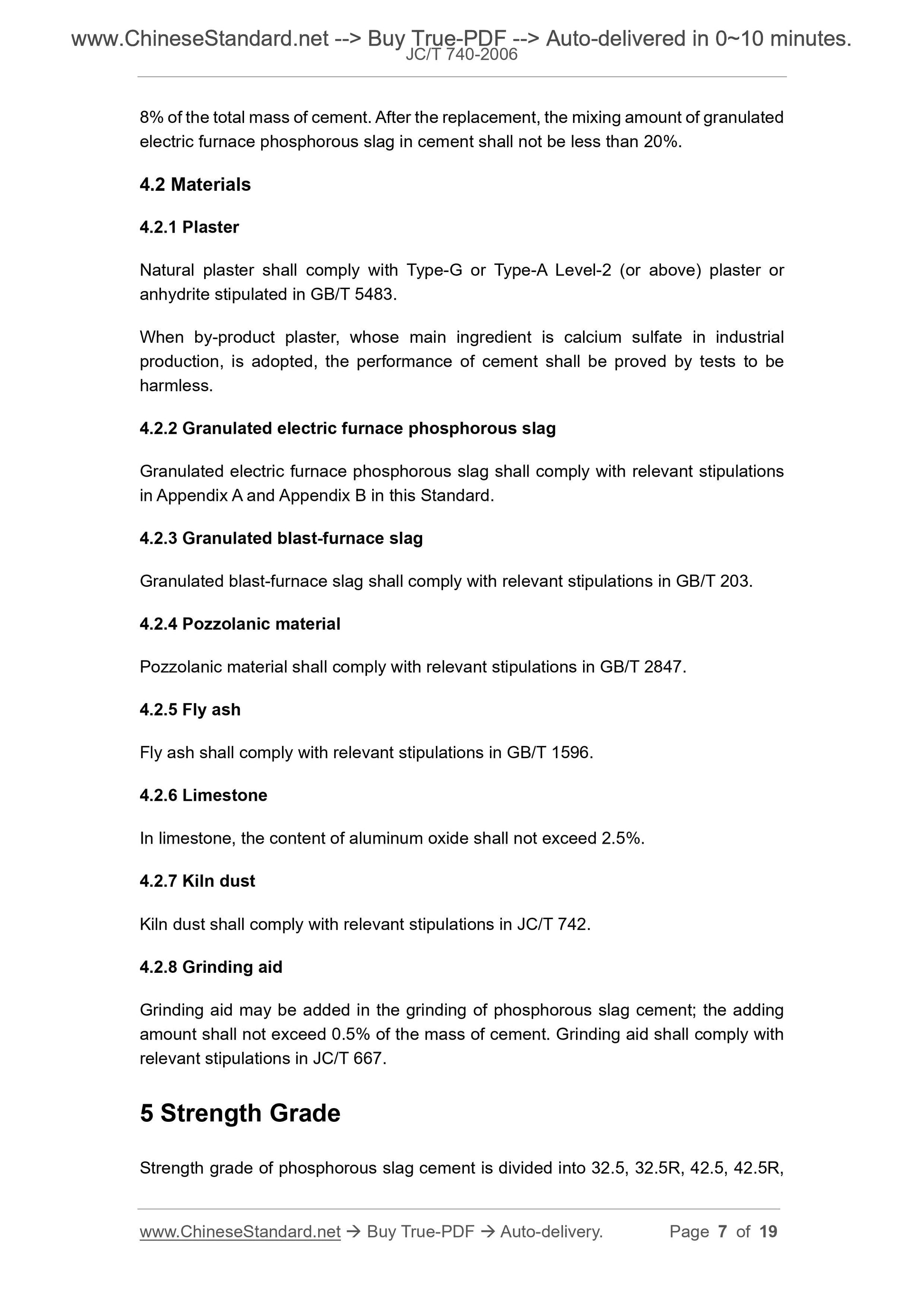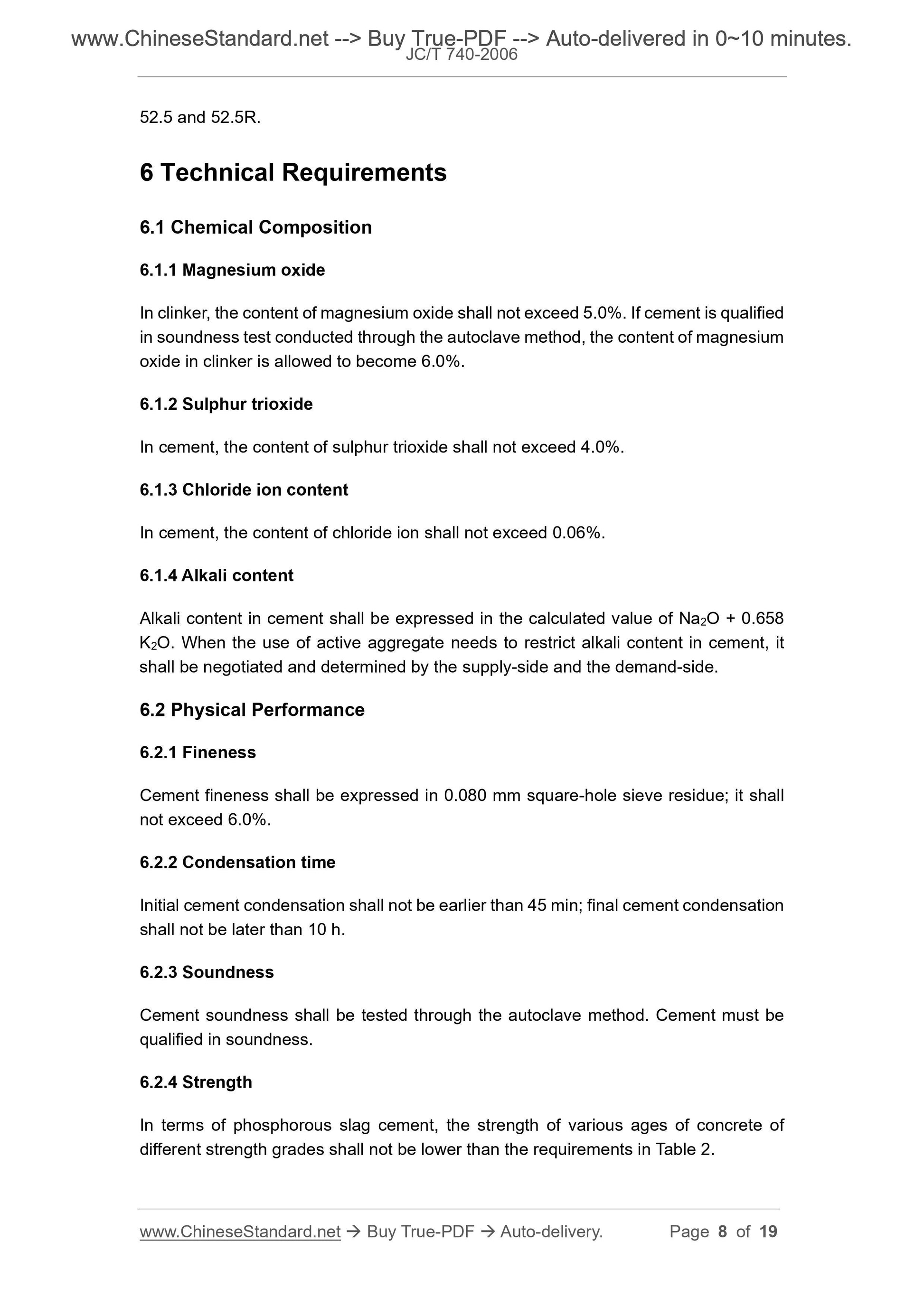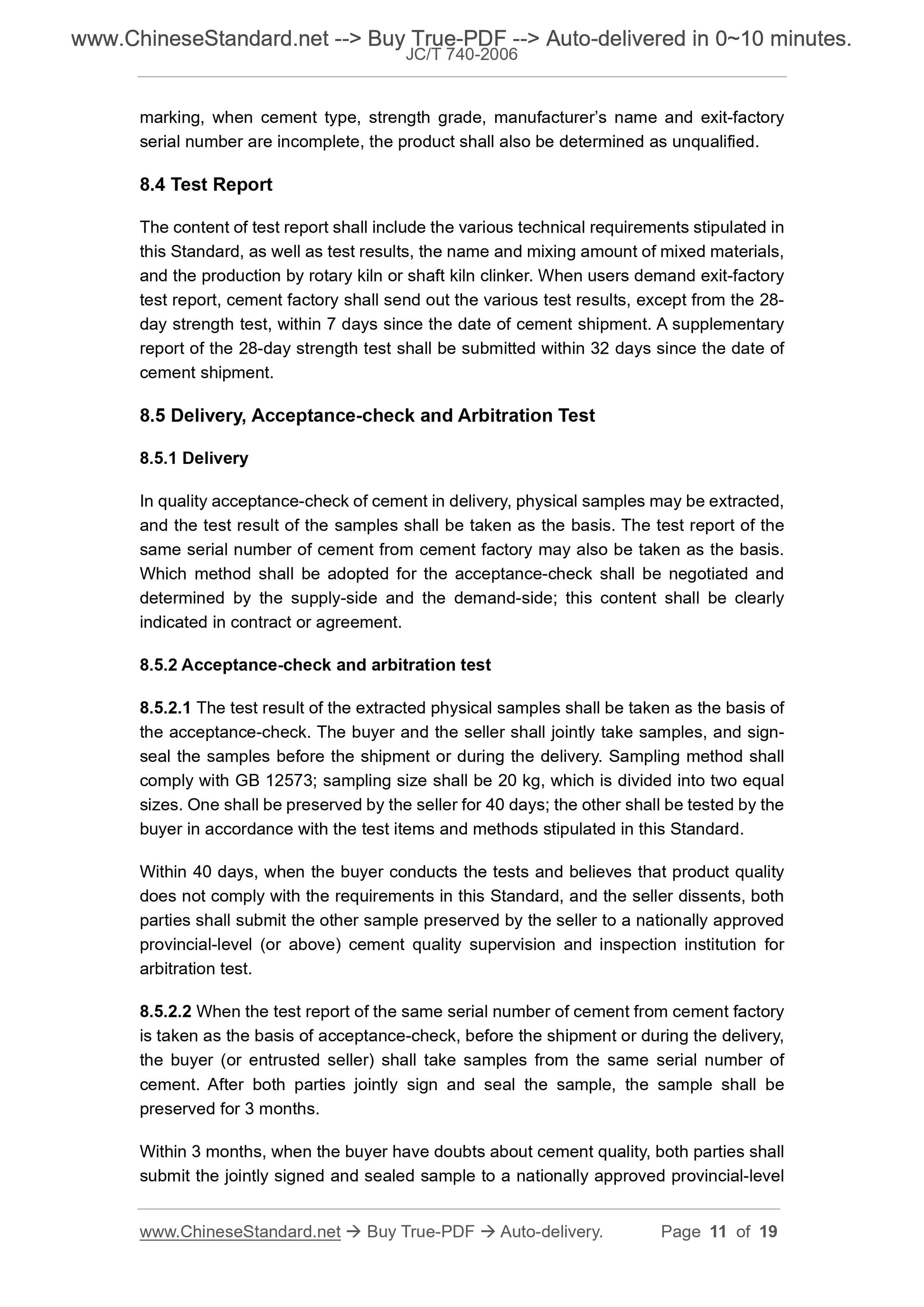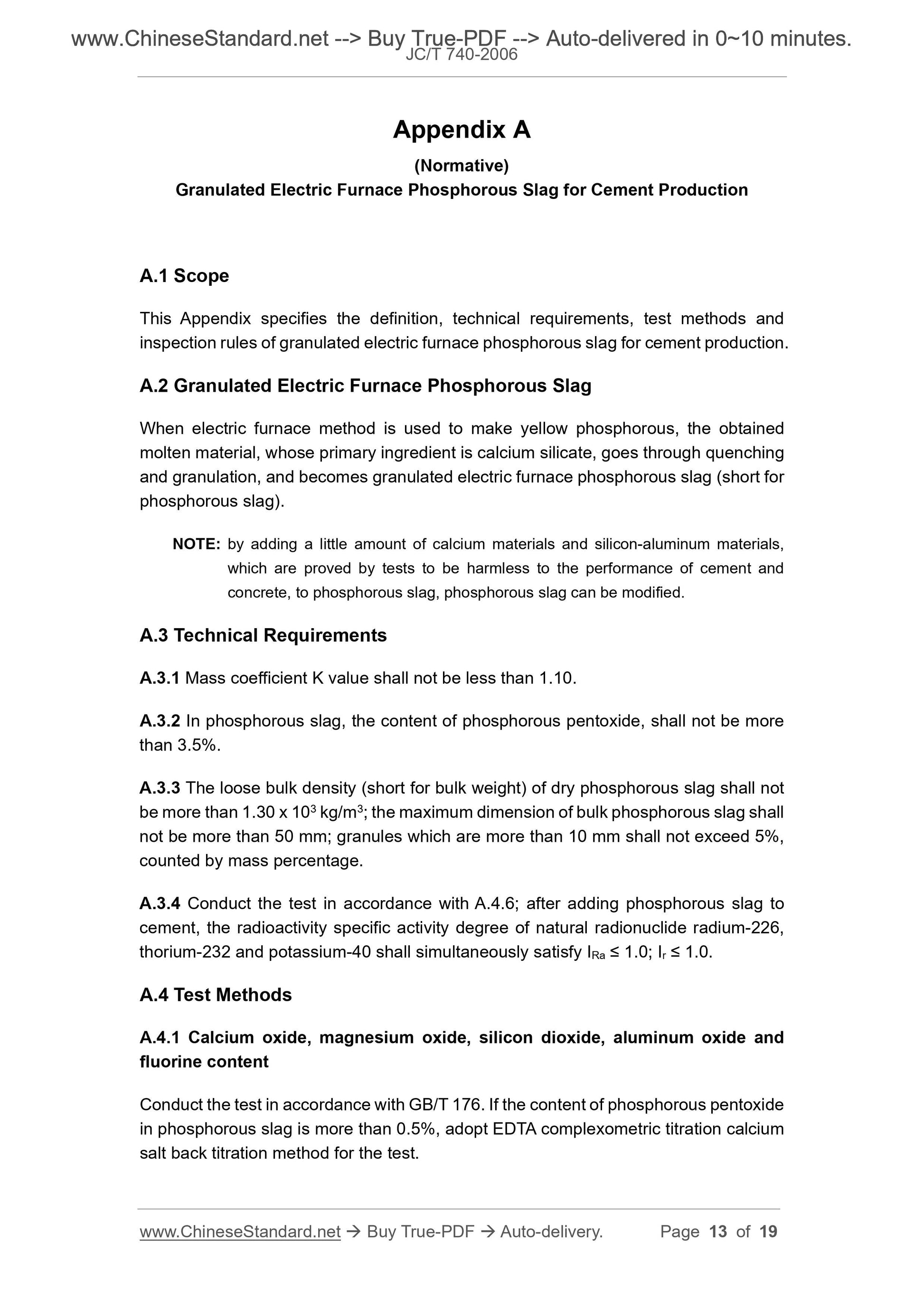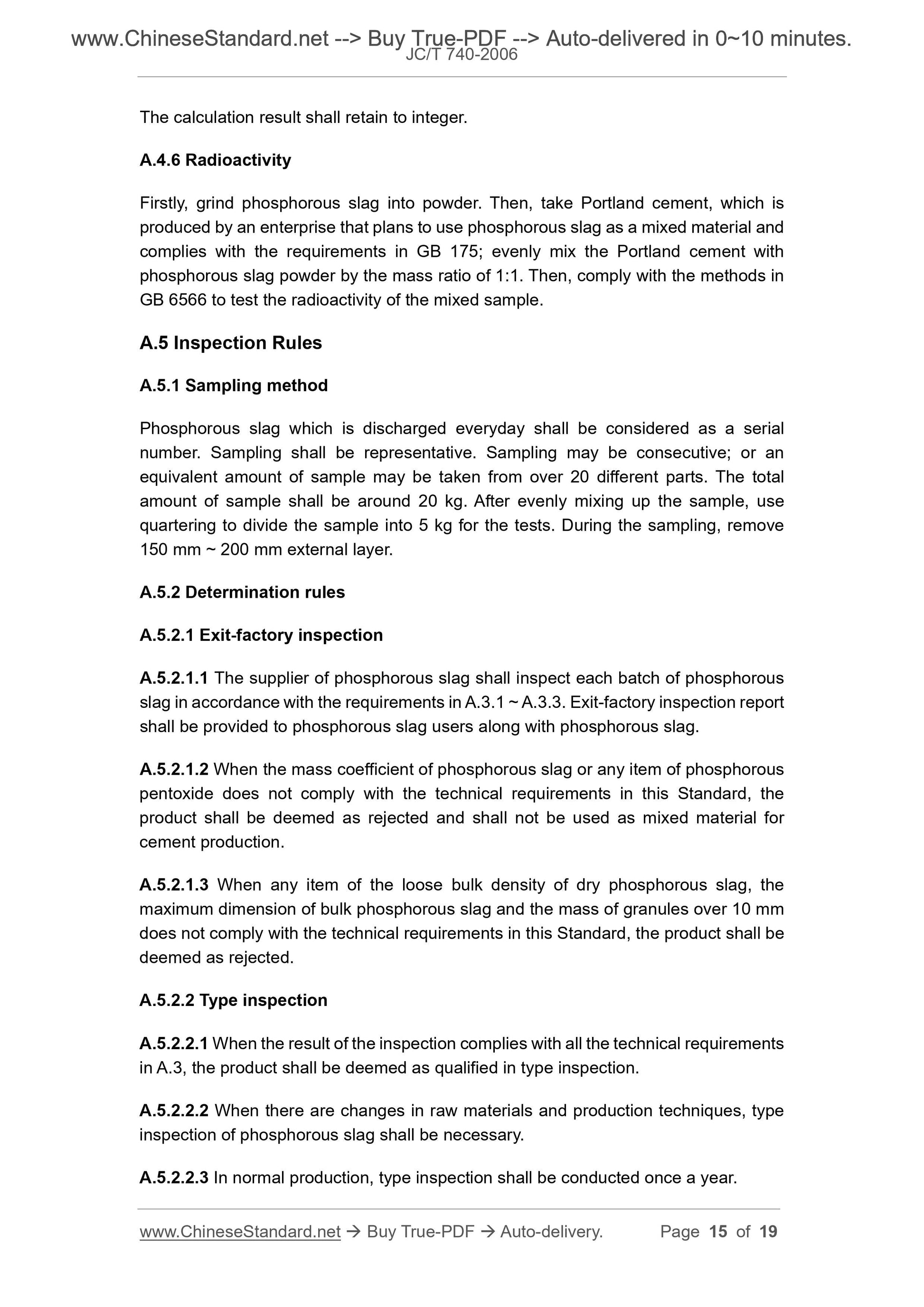1
/
of
9
www.ChineseStandard.us -- Field Test Asia Pte. Ltd.
JC/T 740-2006 English PDF (JC/T740-2006)
JC/T 740-2006 English PDF (JC/T740-2006)
Regular price
$150.00
Regular price
Sale price
$150.00
Unit price
/
per
Shipping calculated at checkout.
Couldn't load pickup availability
JC/T 740-2006: Portland Phosphorous Slag Cement
Delivery: 9 seconds. Download (and Email) true-PDF + Invoice.Get Quotation: Click JC/T 740-2006 (Self-service in 1-minute)
Newer / historical versions: JC/T 740-2006
Preview True-PDF
Scope
This Standard specifies the terms and definitions, material requirements, strengthgrade, technical requirements, test methods, inspection rules, packaging, marking,
transportation and storage of Portland phosphorous slag cement.
This Standard is applicable to Portland phosphorous slag cement, which takes
granulated electric furnace phosphorous slag as the primary mixed material.
Basic Data
| Standard ID | JC/T 740-2006 (JC/T740-2006) |
| Description (Translated English) | Portland Phosphorous Slag Cement |
| Sector / Industry | Building Materials Industry Standard (Recommended) |
| Classification of Chinese Standard | Q11 |
| Classification of International Standard | 91.100.10 |
| Word Count Estimation | 11,194 |
| Date of Issue | 2006-05-06 |
| Date of Implementation | 2006-10-01 |
| Older Standard (superseded by this standard) | JC/T 740-1988 (1996) |
| Quoted Standard | GB 175; GB/T 176; GB/T 203; GB/T 750; GB/T 1345; GB/T 1346; GB/T 1596; GB/T 2847; GB/T 5483; GB/T 1871.1; GB/T 6005; GB 6566; GB 9774; GB 12573; GB/T 17671; JC/T 420; JC/T 667; JC/T 742 |
| Issuing agency(ies) | Ministry of Industry and Information Technology |
| Summary | This standard specifies the terms and definitions phosphorous slag portland cement, material requirements, intensity level, technical requirements, test methods, inspection rules, and packaging, signs, transportation and storage. This standard applies to granulated furnace slag as the main hybrid materials phosphorus phosphorus slag portland cement. |
Share
